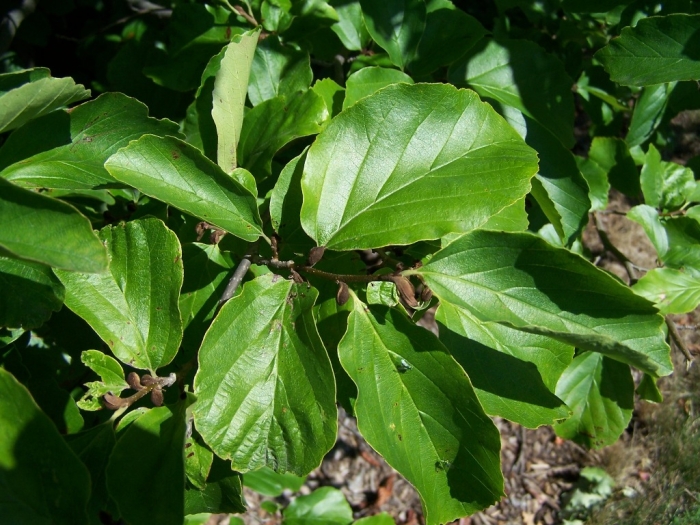Persian Ironwood
(Parrotia persica)
Persian Ironwood (Parrotia persica)
/
/

Bruce Marlin
CC BY-SA 3.0
Image By:
Bruce Marlin
Recorded By:
Copyright:
CC BY-SA 3.0
Copyright Notice:
Photo by: Bruce Marlin | License Type: CC BY-SA 3.0 | License URL: https://creativecommons.org/licenses/by-sa/3.0 | Uploader: Bruce Marlin | Publisher: Wikimedia Commons | Title: Parrotia_persica_Morton.jpg | Notes: ''Passiflora aerulea'' fruit |






































Estimated Native Range
Summary
Parrotia persica, commonly known as Persian Ironwood, is a deciduous tree native to the Alborz mountains of northern Iran. It exhibits a swift growth rate when young and matures to a height of approximately 30 meters (98 feet) with a spread of 8–15 meters (26–49 feet). Typically multi-stemmed, it can be pruned to a single trunk, which may reach up to 150 cm (59 inches) in diameter. The bark is smooth and pinkish-brown, flaking and peeling in a manner similar to plane trees, revealing a mosaic of cinnamon, pink, green, and pale yellow patches. The glossy green leaves turn to rich purple, orange, and brilliant red in autumn, often on the same tree. The dark red flowers, resembling those of witch-hazel, appear in late winter on bare stems, featuring four rounded sepals without petals and conspicuous stamens forming a dense red cluster.
Persian Ironwood is valued for its brilliant autumn foliage and the exfoliating bark that becomes more pronounced with age. It is used in urban planting, as a specimen tree, and occasionally for border planting due to its moderate size and drought tolerance. It thrives in full sun but can tolerate part shade, requiring medium water and well-drained soils. While generally disease-resistant, it can suffer from canker diseases and may not flower prolifically in shaded conditions.CC BY-SA 4.0
Persian Ironwood is valued for its brilliant autumn foliage and the exfoliating bark that becomes more pronounced with age. It is used in urban planting, as a specimen tree, and occasionally for border planting due to its moderate size and drought tolerance. It thrives in full sun but can tolerate part shade, requiring medium water and well-drained soils. While generally disease-resistant, it can suffer from canker diseases and may not flower prolifically in shaded conditions.CC BY-SA 4.0
Plant Description
- Plant Type: Tree
- Height: 20-40 feet
- Width: 20-30 feet
- Growth Rate: Moderate
- Flower Color: N/A
- Flowering Season: Spring, Winter
- Leaf Retention: Deciduous
Growth Requirements
- Sun: Full Sun, Part Shade
- Water: Medium
- Drainage: Medium
Common Uses
Bird Garden, Drought Tolerant, Fire Resistant, Hedges, Potted Plant, Street Planting
Natural Habitat
Alborz mountains of northern Iran
Other Names
Common Names: Papegojbuske
Scientific Names: , Parrotia persica, Hamamelis persica, Parrotia siderodendron,
GBIF Accepted Name: Parrotia persica (DC.) C.A.Mey.